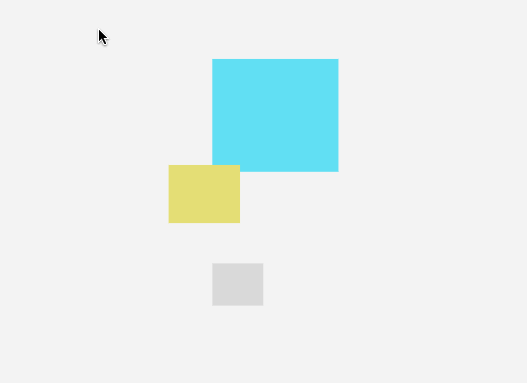前言
使用Qt + OpenCV实现,通过鼠标画线绘制几何图形,然后通过opencv进行图形轮廓识别,返回图形顶点,然后创建对应的几何图形添加到场景中。绘制使用QGraphics体系完成。
看效果图:
本文demo在这里
点击下载文章来源:https://www.toymoban.com/news/detail-496834.html
环境: Qt5.15.2 + vs2019 64bit文章来源地址https://www.toymoban.com/news/detail-496834.html
支持图形:直线、圆、椭圆、矩形、三角形。
快捷键:数字3 清屏
正文
demo的功能实现流程如下:
在临时画线层绘制,然后将绘制的图形保存成一张临时图片,再将其传给opencv进行轮廓检测,返回轮廓点后再计算出轮廓顶点坐标,将坐标交给Qt层动态创建几何图形,添加到scene中。
opencv下载
本文中需要用到opencv的轮廓识别,所以先要准备好opencv的库,本文下载的是当前最新版本V4.6.0
opencv下载地址
 安装后,将其头文件和动态库拷贝到自己的工程项目中,并创建一个pri文件进行管理,也方便其他项目使用。
安装后,将其头文件和动态库拷贝到自己的工程项目中,并创建一个pri文件进行管理,也方便其他项目使用。

这里用到的动态库是opencv_world460.dll
opencv.pri
INCLUDEPATH += $$PWD/include
win32 {
CONFIG(release, debug|release) {
LIBS += -L$$PWD/lib/ -lopencv_world460
}
CONFIG(debug, debug|release) {
LIBS += -L$$PWD/lib/ -lopencv_world460d
}
}
OpenCV轮廓提取算法使用findContours()接口,详情可参考这里
绘制
本文使用QGraphics体系进行鼠标画线,是在之前的博客文章代码基础上复用的
详情参考:
Qt 鼠标/触屏绘制平滑曲线,支持矢量/非矢量方式
Qt实现桌面画线、标记,流畅绘制,支持鼠标和多点触控绘制
检测
调用opencv的接口进行检测
void ShapeDetecter::shapeDetect(string path_to_image)
{
RNG rng(123);
// Read image
Mat3b src = imread(path_to_image);
// Convert to grayscale
Mat1b gray;
cvtColor(src, gray, COLOR_BGR2GRAY);
// Binarize
Mat1b bin;
threshold(gray, bin, 175, 255, THRESH_OTSU|THRESH_BINARY_INV);
// Perform thinning
_thinning(bin, bin);
// Create result image
// Mat3b res = src.clone();
// Find contours
vector<vector<Point>> contours;
findContours(bin.clone(), contours, RETR_EXTERNAL, CHAIN_APPROX_SIMPLE);
// For each contour
if(contours.size() <=0)
return;
vector<Point> contour = contours[0];
for (vector<Point>& contour : contours)
{
// Compute convex hull
vector<Point> hull;
convexHull(contour, hull);
// Compute circularity, used for shape classification
double area = contourArea(hull);
double perimeter = arcLength(hull, true);
double circularity = (4 * CV_PI * area) / (perimeter * perimeter);
// Shape classification
qDebug() << __FUNCTION__ << "circularity" << circularity;
if(circularity > 0.85)
{
// circle
RotatedRect rect = fitEllipse(contour);
_drawCircle(rect.boundingRect());
}
else if(circularity > 0.68)
{
// Minimum oriented bounding box ...
RotatedRect rect = minAreaRect(contour);
Point2f pts[4];
rect.points(pts);
QVector<QPoint> points;
for (int i = 0; i < 4; ++i)
{
points.push_back(QPoint( pts[i].x,pts[i].y));
}
emit sigDrawPolygon(points);
}
else if (circularity > 0.5)
{
// TRIANGLE
// Select the portion of the image containing only the wanted contour
Rect roi = boundingRect(contour);
Mat1b maskRoi(bin.rows, bin.cols, uchar(0));
rectangle(maskRoi, roi, Scalar(255), FILLED);
Mat1b triangle(roi.height, roi.height, uchar(0));
bin.copyTo(triangle, maskRoi);
// Find min encolsing circle on the contour
Point2f center;
float radius;
minEnclosingCircle(contour, center, radius);
// decrease the size of the enclosing circle until it intersects the contour
// in at least 3 different points (i.e. the 3 vertices)
vector<vector<Point>> vertices;
do
{
vertices.clear();
radius--;
Mat1b maskCirc(bin.rows, bin.cols, uchar(0));
circle(maskCirc, center, radius, Scalar(255), 5);
maskCirc &= triangle;
findContours(maskCirc.clone(), vertices, RETR_LIST, CHAIN_APPROX_NONE);
} while (vertices.size() < 3);
qDebug() << __FUNCTION__ <<"TRIANGLE "<< "vertices_size = " <<vertices.size();
// Just get the first point in each vertex blob.
// You could get the centroid for a little better accuracy
QVector<QPoint> points;
points.push_back(QPoint(vertices[0][0].x,vertices[0][0].y));
points.push_back(QPoint(vertices[1][0].x,vertices[1][0].y));
points.push_back(QPoint(vertices[2][0].x,vertices[2][0].y));
// emit sigDrawTriangle(points);
emit sigDrawPolygon(points);
}
else
{
_drawLine(contours.at(0), boundingRect(contours.at(0)));
}
}
}
动态创建图形
从opencv返回顶点接口后,这里直接快捷创建QGraphicsLineItem、QGraphicsEllipseItem、QGraphicsPolygonItem,也可以自定义QGraphicsItem 然后在paint中进行绘制,自由度更高,比如设置平滑及其他参数等。
可以参考之前的博客
Qt鼠标拖动绘制基本几何图形
void WbCanvasItem::onDrawLine(const QPoint &point1, const QPoint &point2)
{
auto item = new QGraphicsLineItem(QLineF(point1,point2),this);
item->setPen(QPen(Qt::red,5, Qt::SolidLine, Qt::RoundCap, Qt::RoundJoin));
m_pChildItems.append(item);
}
void WbCanvasItem::onDrawCircle(const QRect &rect)
{
auto item = new QGraphicsEllipseItem(rect,this);
item->setPen(QPen(Qt::red,5, Qt::SolidLine, Qt::RoundCap, Qt::RoundJoin));
m_pChildItems.append(item);
}
void WbCanvasItem::onDrawPolygon(const QVector<QPoint> &pointVec)
{
auto item = new QGraphicsPolygonItem(QPolygonF(pointVec),this);
item->setPen(QPen(Qt::red,5, Qt::SolidLine, Qt::RoundCap, Qt::RoundJoin));
m_pChildItems.append(item);
}
本示例通过简单演示整个流程,若运用到实际项目中需要进一步优化。
本文demo在这里
点击下载
环境: Qt5.15.2 + vs2019 64bit
到了这里,关于Qt+opencv 鼠标画线实现几何图形识别并动态创建的文章就介绍完了。如果您还想了解更多内容,请在右上角搜索TOY模板网以前的文章或继续浏览下面的相关文章,希望大家以后多多支持TOY模板网!










